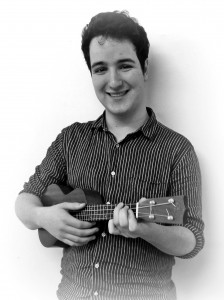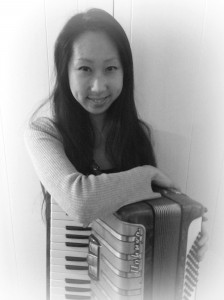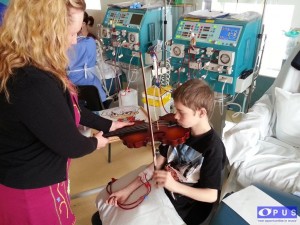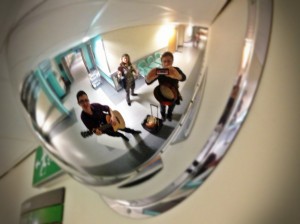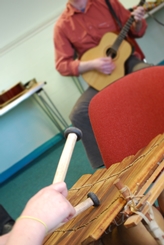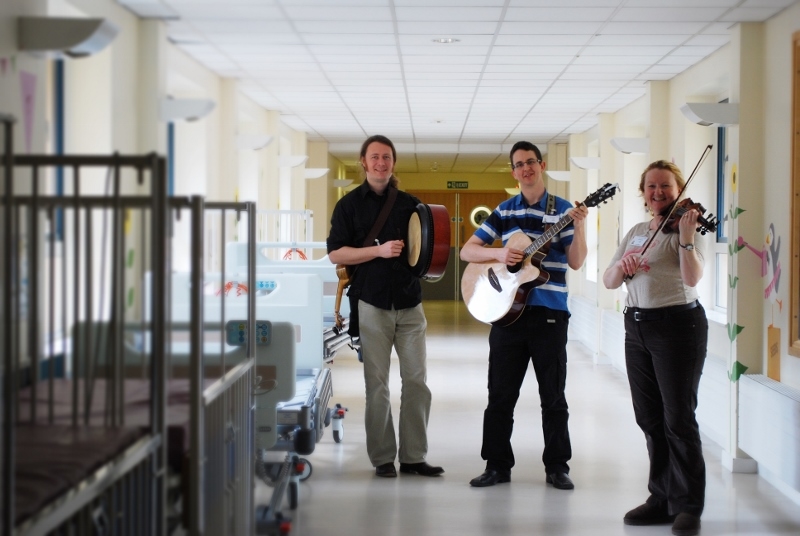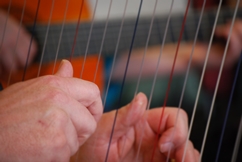 We are pleased to announce that our next Music in Healthcare Settings training programme for musicians will take place on 31st October, 1st, 4th, 5th and 6th November 2013. This will take place at the Kedleston Road Training and Development Centre in Derby, UK, with part of the time spent at the Royal Derby Hospital/Derbyshire Children’s Hospital.
We are pleased to announce that our next Music in Healthcare Settings training programme for musicians will take place on 31st October, 1st, 4th, 5th and 6th November 2013. This will take place at the Kedleston Road Training and Development Centre in Derby, UK, with part of the time spent at the Royal Derby Hospital/Derbyshire Children’s Hospital.
A full brief and application form are attached below. You are advised to send your application asap as places usually fill up quickly.
Please get in touch with any questions you may have.
Music in Healthcare Training opportunity Artists Brief Oct-Nov 2013 (pdf)
Application Form (doc)
Application Form (pdf)
Some of the feedback from trainees on our previous courses:
‘Thank you so much for this opportunity. It was such a pleasure to explore such an exciting aspect of music making with such lovely like minded musicians, with such a high level of professional standard from the trainers delivering this course. I can’t believe we made such fantastic progress in only five days, and I am thoroughly invigorated by what I have seen can be achieved with music in a hospital setting.’
‘This course is really is a must for any musician who wishes to work in healthcare settings. The course leaders are lovely to work with and obviously are very passionate and knowledgeable about their vocation. It’s a massive learning curve, and you must approach it with an open mind and willingness to learn, but you get a lot of support in a really welcoming and friendly environment. I’ve come away feeling inspired and challenged and informed and able to use all I’ve learnt in my own practice straightaway. It is also amazingly good value for money!’
‘Professional, personally and as a musician, this has been absolutely the best course I’ve ever been on. It’s been a fantastic privilege working with a supportive group of musicians, superb facilitation from the course team and a great mix of theory and practice which has equipped me to start my journey into working in healthcare settings.’
‘A fantastic week for those who are interested in learning more about music in a healthcare setting, expanding their repertoire, developing skills in improvising and meeting some truly lovely people!’
‘This course is an excellent introduction and grounding in the professional practice of music in healthcare. It is presented with great professionalism and expertise.’
‘This will test and stretch the way you think about delivering any kind of music intervention. I’d recommend you have previously at least practised this in some way so that you can self-examine and reflect. 100% professional programme in content and delivery. Complements all other training I’ve done and widened my horizons.’
‘Bring an open mind, and be prepared to learn and share.’
‘The course gives an exciting insight into what music in healthcare is like, which can really open your eyes to something new, I know it did for me. There is the chance to experiment with music within a comfortable, relaxed setting, which as a person who hates improvising I found completely stress free and fun. As well as this you learn so many transferable skills for jobs including music and for everyday life which makes the course really worth while.’
